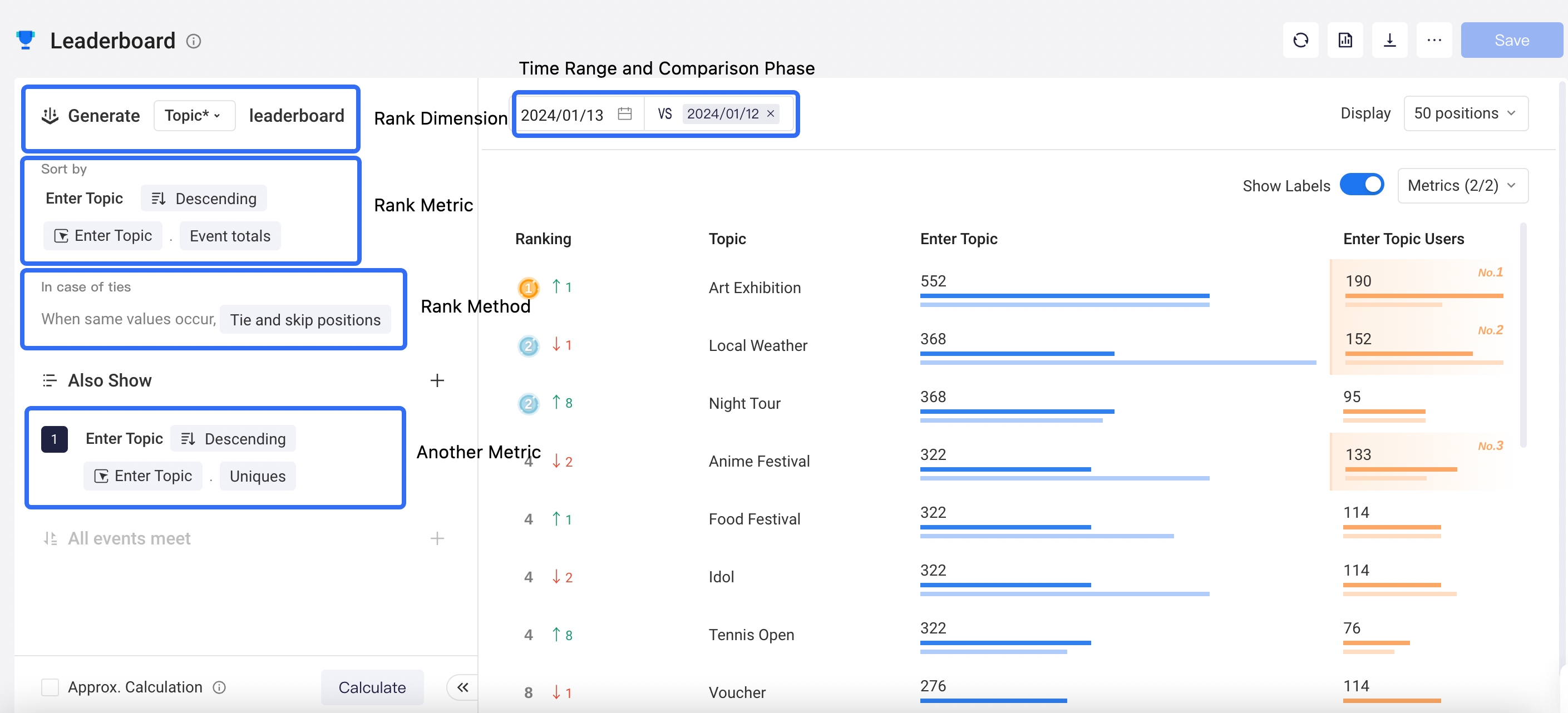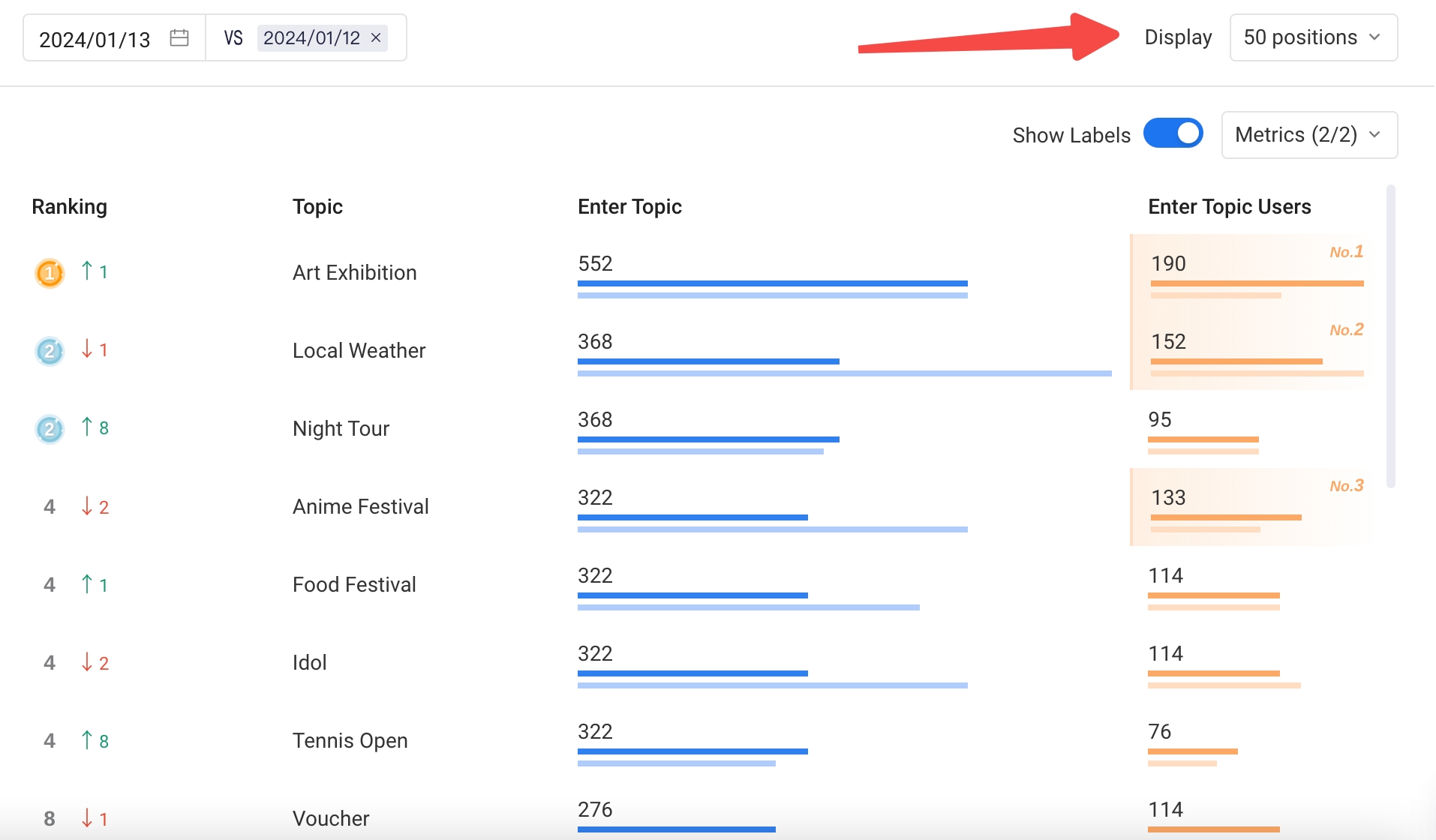# Leaderboard
Leaderboard ranks dimensions by metrics values, which can be used to display a board of the Top N , positions, and position changes.
With leaderboard, you can get the answer to the following problems:
- Who are the Top100 players, and what are their battle records?
- What are the most participated topic of the day, as compared with yesterday?
- View the production ratio of each level to identify levels that need optimization.

# Leaderboard Setup
Rank dimension: Which dimension is used for ranking, such as "topic" in the "Hot Topics Leaderboard". By default, "Account ID" is used for ranking, and it supports any event property and user property, including virtual properties.
Rank metric: Rank by which metric value, such as "popularity" in the "Topic Popularity Ranking". Only supports the use of events related to the rank dimension. Default is descending order, it can be adjusted to ascending order.
Rank method: There are 3 types of sorting methods based on "whether tie is supported" and "whether to skip positions after tie". Tie and skip positions (rank) supports having the same position for the same metric values, with positions becoming non-consecutive after tie, such as 1,2,2,4; tie without skipping positions (dense_rank) also supports same position values, but the ranks remain consecutive after parallel ranking, such as 1,2,2,3; default (row_number) does not support tie, and if metric values are the same, the system's default order is used to distinguish the rank. It is important to note that if tie is selected, when a tie occurs, the system will randomly display the order.
Another Metric: Used to display other metrics addition to the ranking metric, such as "Number of won battles" and "Number of defeats" in the "Player Rankings", which are supplementary information to the leaderboard. Like the rank metrics, it can constitute only events related to the rank dimension.
# Time Range and Comparison Phase
The metrics used in the leaderboard, including the rank metric and other metrics, are all calculated based on the overall time range.
The leaderboard supports setting a comparison phase, which enables the comparison between the current value and previous value, as well as the comparison between the current rank and the previous rank. For example, on the "Weekly hot topics board," you can set 'last week' as the comparison phase, so that you can view the popularity of each topic from both this week and the last week, and the ranks of a topic from both weeks, making it easier to spot rising hot topics.
# View Leaderboard
- TopN
The unit count for the ranking can be set to an integer between 3-1000, and it will display the top N according to the "number of positions" you select. It is important to note that even if a full ranking is performed, due to display limitations, only a maximum of 1000 entries can be returned after sorting. When using "Tie and Skip" and "Tie without Skip" as sorting methods, not all rankings can be displayed. You can download the full data to review locally.

- Details
Hovering over the subject of interest on the leaderboard will display a detail card for that subject, showing: the metric value for this period, the current ranking, ranking fluctuation, global median, total positions, and also displaying both the value and ranking of the metrics.

Among them, the sorting is based on the global median and total rank, which can be used to assess the position of the subject in the global context. It should be noted that if the ranking is based on a metric that is null or infinite, the subject will still be included in the total rank and placed at the end of the list.
